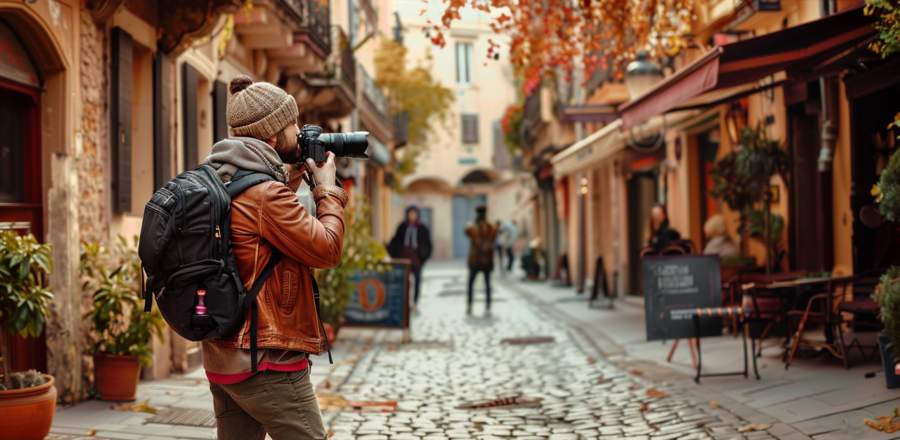When Translation Apps Just Don’t Cut It
Sure, your phone can tell you how to order coffee in ten languages. But have you ever tried explaining “Can you make me look slightly less like I ate an entire cheese plate by myself?” to Google Translate?Nuance goes flying out the window. Working with someone who speaks the local language fluently—and ideally understands the unspoken side of it too—means fewer awkward gestures and more actual communication. You can give real feedback, and you’ll actually be understood without pantomiming your way through every pose.
Comfort Isn’t Just Physical
Being photographed is inherently vulnerable. Now add a language barrier, a crowd of people walking by, and a confusing cultural backdrop, and you’ve got the recipe for the least flattering vacation photo imaginable.A local-language photographer not only eases communication—they help you feel *seen* in the right way. They know the difference between formal and casual poses in their culture. They can offer direction without hesitation or confusion. The result? You look natural, not like someone who’s been asked to “smile more, but also tilt your neck like an interested flamingo.”
More Than Just Directions
Most tourists stick to the same well-worn photo spots. And there’s nothing wrong with the Eiffel Tower or the Santorini cliffside, but if you want photos that feel unique, you’ll need someone who knows where the real scenes unfold.A local-language speaker isn’t just reading maps—they’re reading the room. They know when to avoid a busy plaza or how to slip into a courtyard where the light hits just right. You get access to the kind of backdrops that aren’t swarming with Instagram hopefuls adjusting their filters in real-time.
Cultural Context Means Better Composition
This one gets serious, because it matters. Cultural awareness affects how people pose, what facial expressions mean, what’s respectful, and what might be misunderstood. A photographer who lives that culture doesn’t have to guess—they just get it.You might think that wide-eyed surprise look is cute. Locally, it might read as confused or mocking. You may want a hand-on-hip power pose, but that could be wildly out of place in front of a church or monument. A culturally aware photographer—especially one who speaks the local language—isn’t just pointing a camera. They’re shaping how you engage with the place around you, and how it reflects back at you in every frame.
The Invisible Rapport That Shows Up in the Shot
There’s something magic that happens when you click with your photographer—when their directions make sense, their jokes land, and you feel relaxed enough to be yourself. This doesn’t always happen when your shared vocabulary is five words and two hand signals.A local-language speaker can build real-time rapport that puts everyone at ease. You laugh naturally. Your partner forgets they hate having their picture taken. Even the kids stop pulling weird faces and give you one, just one, photo where everyone’s eyes are open. That’s not luck—that’s good communication, subtle cultural fluency, and trust.
Behind-the-Scenes Advocacy
Need access to a private garden? Want to take a photo in a café without getting side-eyed by staff? Curious about photographing inside a local market? A local-language photographer often acts as an on-the-spot advocate. They can negotiate, charm, explain, or at the very least smooth over the confusion that comes from wandering into someone’s place of business with a camera lens the size of a baguette.This doesn’t mean they’re pulling strings—it means they know the etiquette, and they speak the language of courtesy and permission. That opens doors. Sometimes literally.
Photos That Actually Feel Like the Place
It’s one thing to get a great photo. It’s another to get a photo that feels like it belongs to the moment, not just the pose. Local-language photographers bring more than technical skill—they bring atmosphere. They can cue a shot at the exact second the cathedral bells ring, or catch the look you give your partner when the street musician starts playing your song.It’s this kind of emotional context that turns an image into a keepsake. When the person behind the lens understands what’s happening *around* the frame, the photo captures more than just your face. It captures what the place meant to you.
No Regrets, No Retakes
Ever come home from a vacation, scroll through your photos, and realize half of them look like you’re trying to find a lost contact lens or angrily confronting the sun? A language gap can leave you nodding along during a photo session without actually knowing what’s being asked of you.When communication is clear, mistakes go down. You’re not squinting when you’re supposed to be serene. You’re not frowning because you didn’t hear “three, two, one.” What you get is closer to what you envisioned—and that means no quietly muttering “we should’ve just taken selfies” after the fact.
Lost in Translation? Not This Time
You don’t need a translator to have a good time. But if you want portraits that actually reflect your personality, in a setting that reflects the culture you’re standing in, a local-language photographer makes a world of difference. They’re not just photographers. They’re mood translators, location whisperers, and accidental tour guides rolled into one.Next time you’re traveling and want something more than just another cookie-cutter photo shoot, consider looking for someone who can speak both your language—and the place’s. Your photo album will thank you. And so will your future self, when you’re trying to remember what it *felt* like to be there, not just what it looked like.
Article kindly provided by picturo.eu
